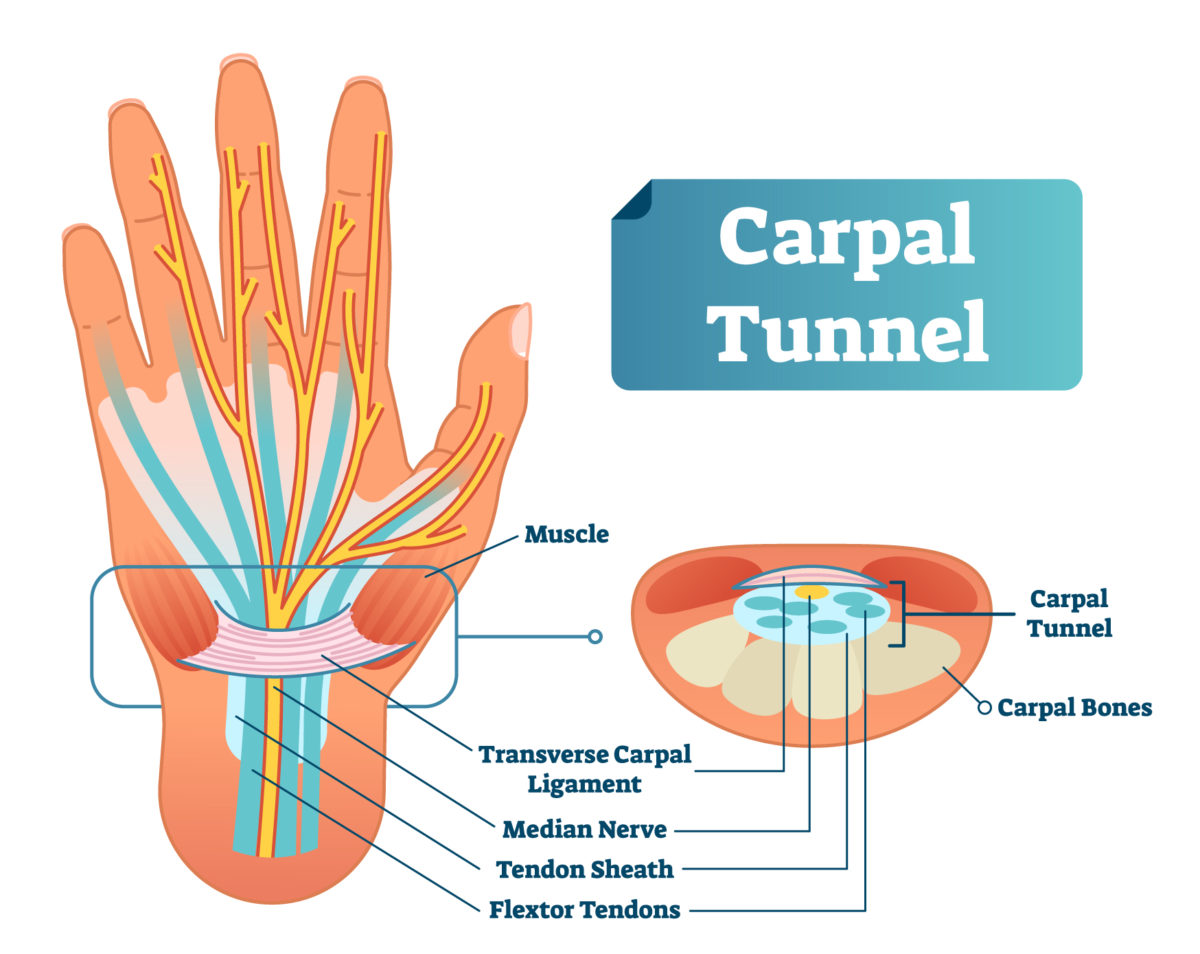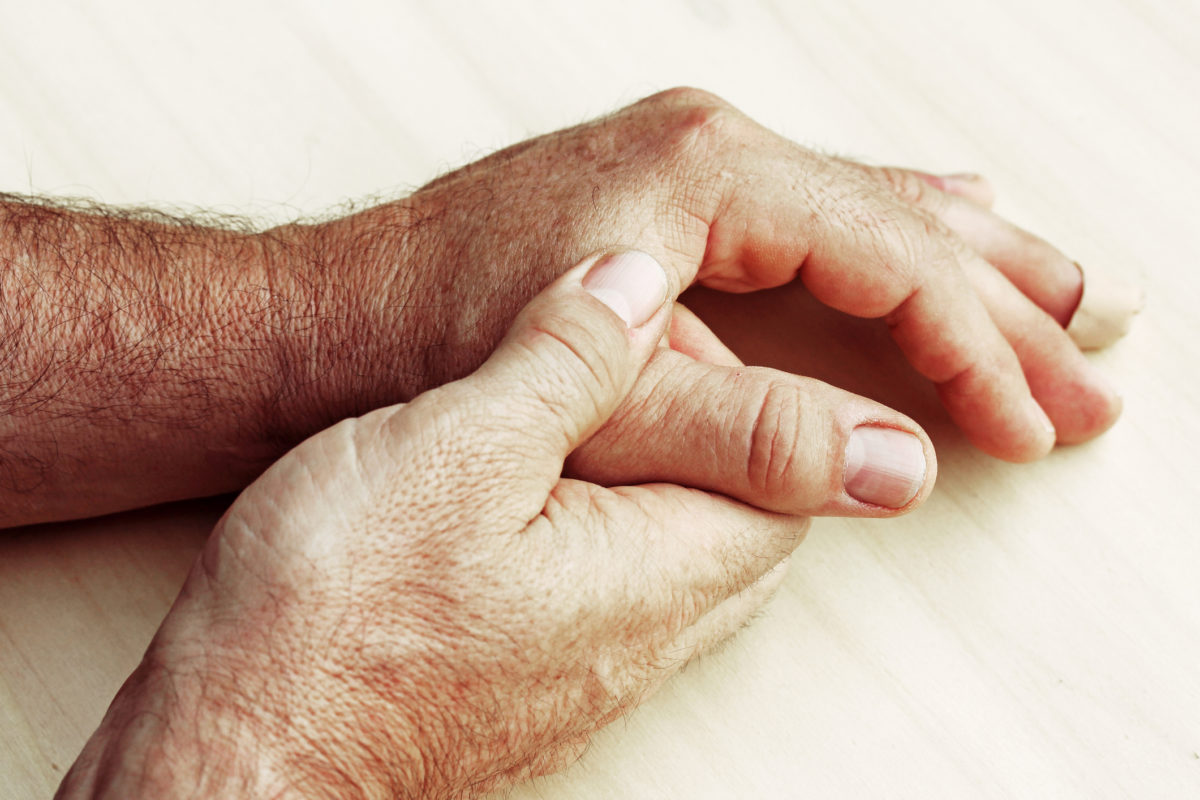Between 3 percent and 6 percent of the adult population has carpal tunnel syndrome (CTS), making it undoubtedly the most common nerve disorder today. How carpal tunnel syndrome is treated depends on a variety of factors, such as the intensity of the condition. Fortunately, treatment can be very effective in reducing the pain, numbness, and tingling associated with CTS.
CTS occurs when there is pressure or swelling in the carpal tunnel, which is a space in your wrist where nine tendons and the median nerve pass from the arm into the hand. The condition is usually associated with repetitive use of the wrists, such as regularly using a keyboard or hand tools, but research indicates that it is likely related to a genetic predisposition as well.
How Carpal Tunnel Syndrome is Treated
Methods of treating carpal tunnel syndrome or reducing its effects range from self-care to surgical procedures in more serious cases. Following are several common solutions.
Oral Medications
Nonsteroidal anti-inflammatory drugs, known as NSAIDs, may help relieve pain and reduce swelling. Brand names of such medications available over-the-counter or in prescription form include:
- Advil and Motrin (ibuprofen)
- Aleve (naproxen sodium)
- Mobic (meloxicam)
The use of anti-inflammatory medications to treat carpal tunnel syndrome may be especially ideal if the patient has arthritis symptoms as well.
Some doctors may prescribe a short course of oral steroids as well to reduce swelling. Such medications include prednisone or methylprednisone.
Discuss side effects of medication use with Dr. Arora or your primary care physician.

Steroid Injections
A more effective way to use steroids to treat carpal tunnel syndrome is to inject it into the carpal tunnel. Doing so may help decrease inflammation and swelling, thereby reducing pressure on the median nerve.
Protect Your Wrists
A key to reducing CTS pain is to keep your wrists relatively straight, which is somewhat possible during the day but not so much at night. For that reason, some doctors may prescribe wrist braces that you can wear while you sleep.
To prevent pain, you should also wear a brace if possible when participating in games and sports that strain your wrists, such as bowling.
If your job requires repetitive use of the wrists – such as in manufacturing, construction, or the auto repair fields – wear protective gear if possible to keep them stable.
Self-Care
Self-care is probably one of the easiest and most effective ways to prevent flareups. Take an active role in your CTS treatment plan with the following measures whenever and wherever possible:
- Use ergonomically designed furniture and computer equipment.
- Use proper posture when typing.
- Sleep with your wrists straight, even if you’re not wearing a brace.
- Take frequent breaks at work or when participating in hobbies.
Gently stretch your arms, flex your wrists, and wiggle your fingers regularly to reduce tension and increase blood flow. Dr. Arora can provide you with more specific at-home exercise tips that may reduce CTS symptoms.

Wrist Surgery
In cases where pain is not alleviated with the above treatments, surgeries can be helpful. The two most common surgeries for carpal tunnel syndrome are known as open carpal tunnel release and endoscopic carpal tunnel release, both of which can be handled on an outpatient basis.
- Open carpal tunnel release surgery: In very simple terms, the surgeon makes a 1-inch incision on the wrist and then divides the carpal ligament to enlarge the carpal tunnel.
- Endoscopic carpal tunnel release surgery: This is an alternate option with a similar goal. The surgeon typically makes two half-inch incisions, one on the wrist and one on the palm. A camera attached to a narrow tube is inserted into one incision, and the camera guides the doctor as he uses instruments to cut the carpal ligament through the other incision.
- Laser carpal tunnel surgery: People often ask, but sorry to say, there is no such thing!
Get It Checked Out
How carpal tunnel syndrome is treated depends on the effectiveness of prior treatments, the extent of the condition, your ability to follow other remedies, and more. It’s also possible that your wrist pain is not CTS at all, but a different condition altogether.
The first step is to schedule an appointment to see Dr. Arora in West Bloomfield, Howell, Warren, or Macomb for an evaluation of your condition. If it is carpal tunnel syndrome, we will work with you to find a solution you’re comfortable with. Call us for more information.
























